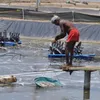[Tech30] How marine robotics startup EyeROV is improving inspection of offshore assets
Kochi-based startup EyeROV makes it to YourStory’s Tech30 list for bringing in data-led reporting and ease-of-use in marine inspections with its compact remotely operated drone.
Marine robotics is not ecommerce or entertainment. You don’t hear about it every day. But the critical nature of the industry cannot be undermined.
Experts say that advanced marine technologies can potentially solve large-scale societal and ecological problems of the world. But does India have cutting-edge machinery to scan its vast oceans effectively and safely?
Kochi-based entrepreneur Johns T Mathai asked the same question while working at as a firmware engineer, only to realise that underwater inspection was “way more challenging” than doing it on land or air.
He tells YourStory,
“You have to deal with high water currents, poor visibility, and an overall hostile environment because of wild marine creatures. Then there are restrictions… you can dive only in the day and up to a certain depth, not beyond. So, human divers are at a greater risk.”
Johns believed that a remotely operated vehicle (ROV) could solve these problems for a bunch of industries like shipping, oil and gas, infrastructure and construction, defence and ocean research organisations.
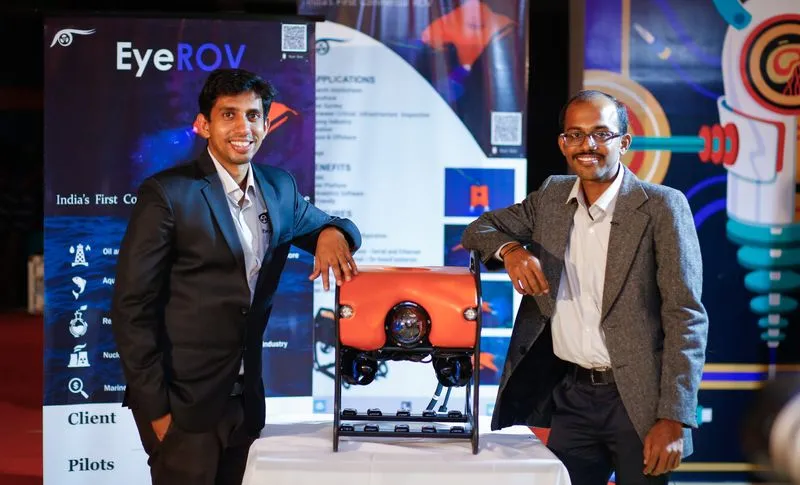
EyeROV founders Johns T Mathai and Kannappa Palaniappan P
EyeROV origins and what it solves
He roped in his college mate Kannappa Palaniappan P to set up a marine robotics startup, , in late 2016. It would go on to build India’s first commercial underwater drone for remote inspection of offshore assets.
While Johns brought in his prior experience of working in robotics, Kannappa had been a project scientist at National Institute of Ocean Technology (of the Government of India), and also held a degree in ocean engineering from IIT Madras.
“He would regularly travel to the seas and witness the problems encountered by ships and other offshore structures,” Johns says of his co-founder.

EyeROV Tuna is a 50X50X50-centimetre cube-shaped drone
Besides the hardware, EyeROV has also developed a data analytics and visualisation platform to share comprehensive reports of underwater surveys conducted by its clients. The intuitive platform is powered by AI and machine learning, and enables quicker and more effective decision making for owners of underwater assets.
John shares,
“With human divers, there are either inspection delays or lack of expertise. They are able to dive only up to 30-40 metres, whereas an ROV drone can go up to 100 or 200 metres below sea level. We’re also building a new product line that can inspect areas up to 300 metres below sea level.”
EyeROV finds a mention in YourStory’s Tech30 list for bringing in data-led reporting in marine operations with its compact, easily manoeuvrable, and operationally safe ROV drone that is entirely built in-house.
The device is economical, multi-functional, and fully digital, and can potentially bring about behavioural shifts in the field of underwater inspection.
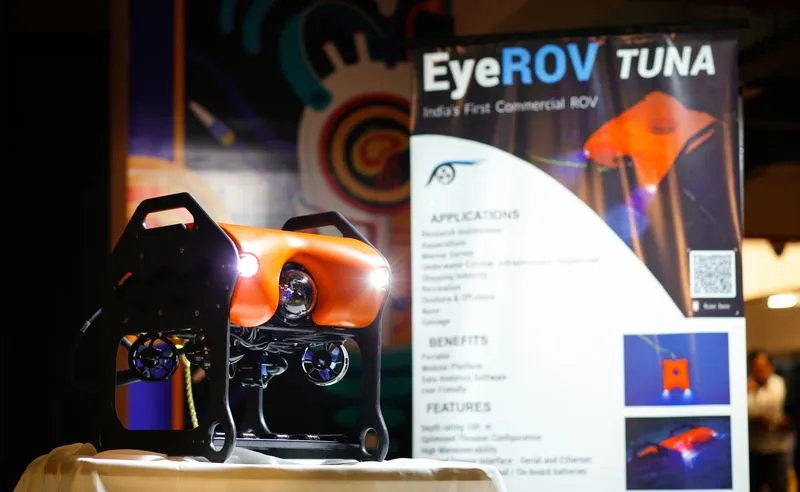
EyeROV Tuna has completed 1,000 hours of underwater inspection
Core product and business model
EyeROV’s first industrial grade underwater drone — EyeROV Tuna — saw a commercial launch in August 2018 after over a year of product development.
The 50cm X 50cm X 50 cm cube-shaped ROV has completed more than 1,000 hours of underwater inspection of dams, bridges, ports, ship hulls, oil and gas assets, and other critical underwater structures across 25 projects in five states.
It works up to a depth of 200 metres, and can be controlled remotely using a laptop or a joystick. A full-HD camera is fitted on to the drone that captures a video feed of the underwater environment, and works effectively even in low-light conditions. The videos can be further enhanced by up to 30 percent using advanced imaging technologies.
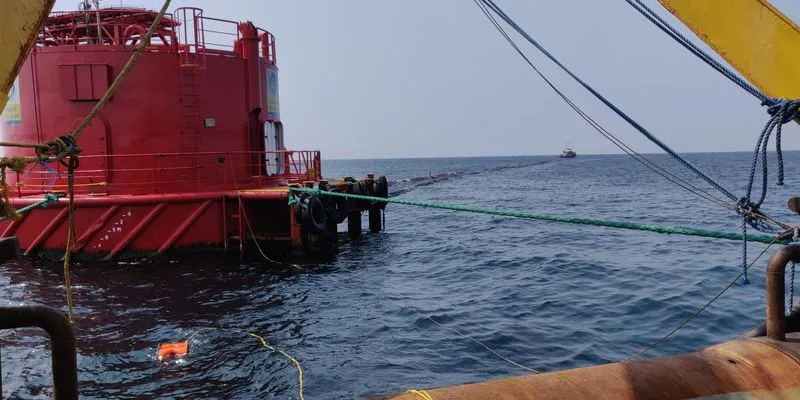
EyeROV is backed by Maker Village Kochi, Kerala Startup Mission, and IIGP
EyeROV Tuna is priced at Rs 18 lakh and has gone on sale on Government e-Marketplace (GeM). The startup looks to gross revenues of Rs 5 crore by 2023.
“We plan to partner with a few inspection companies to provide them a complementary and fully digital underwater solution,” Johns says.
The startup owns the end-to-end design patent for the product, while the manufacturing has been outsourced to vendors. Besides drone sales, EyeROV earns RaaS (Robotics as a Service) and PaaS (Platform as a service) fees.
“In RaaS, we do the inspection ourselves and provide the reports to our clients. They are charged only for the inspection service. In PaaS, enterprises pay a monthly subscription fee for the full data analytics solution,” John explains.
Customers, pilots, and funding
Kochi-based EyeROV’s first customer was the Defence Research and Development Organisation (DRDO) under the Ministry of Defence of the government.
Since then, there’s been no looking back for the startup.
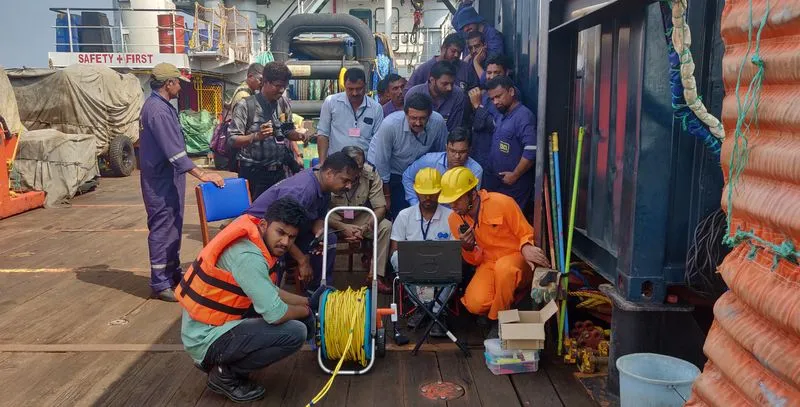
EyeROV targets Rs 5 crore in revenues by 2023
EyeROV has carried out pilots for The Kochi International Container Transshipment Terminal (ICTT), shipping carriers, oil and gas companies, including Bharat Petroleum, construction firms , railways, emergency and disaster management services.
The startup is backed by Maker Village Kochi, Kerala Startup Mission, and the India Innovation Growth Programme (IIGP) — an initiative of the Department of Science and Technology (DST).
EyeROV also raised a seed round of Rs 1.75 crore from GAIL (India’s largest state-owned natural gas processing and distribution company) in 2019.
It is further looking to close a pre-Series A round of $1 million to build out its new product line, enhance the analytics platform, and beef up its 17-member team.
Johns sums up saying, “India has over a 1,000 dams and bridges, but the inspection process is almost 50 years old and the reporting is paper-based. With underwater drones, we’re making inspections better, safer, and quicker.”
Edited by Teja Lele


![[Tech30] How marine robotics startup EyeROV is improving inspection of offshore assets](https://images.yourstory.com/cs/2/dc9aa1302d6c11e9aa979329348d4c3e/IMG2019042610135511-1603700478084.jpg?mode=crop&crop=faces&ar=2%3A1&format=auto&w=1920&q=75)
